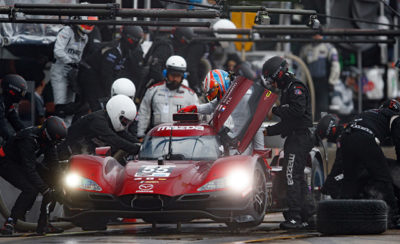Endurance racing advice from the Mazda RT24-P Pros
As more Mazda racers delve into endurance racing, there are many things to learn that don’t always apply to sprint racing. And as organizations like ChampCar, World Racing League and American Endurance Racing grow and add events, there will be more opportunities for racers to try eight-hour or longer races. So we turned to a couple of Mazda endurance racers in the IMSA WeatherTech SportsCar Championship to find out what things beginner long-format drivers need to know.
“The biggest advice I can give is to really not focus on ultimate lap time, because in endurance racing, while we have qualifying, it’s a very small part of the result,” says Oliver Jarvis, driver of the No. 77 Mazda RT24-P, who incidentally broke a 26-year-old track record at Daytona International Speedway. “You take the Rolex 24 At Daytona, and qualifying up front is nice, it’s an ego trip, but it has no reflection on the race result. It’s about finding race setup, and it’s about being quick in traffic and being able to maintain a quick average, and that’s a real skill.”
In other words, consistency is key. It’s a sentiment echoed by Tristan Nunez, Jarvis’s co-driver.
“The biggest skill you can learn as a driver is consistency,” Nunez explains. “Your times need to be within three tenths [of a second] of each other, every lap. If you can do that, you know you’re ready for an endurance race. If you’re all over the place, that’s something you’ve got to work on, whether it’s backing off a little bit and making sure every time is consistent and then working back up to it and pushing a little bit harder, you’ve got to make sure you’re in that range. It’s extremely hard to pass a driver that’s consistent. Someone who is fast one lap and then falls off on another lap is easy to get around. In endurance racing, that’s definitely the key thing you need to learn.”
There is one area that will definitely be different for drivers accustomed to only sprint racing: sharing. It’s not just sharing glory or disappointment, but coming to a compromise on car setup and cockpit ergonomics and working together to figure out driver order and seat time.
“In sprint racing, you can be very selfish,” says Jarvis. “But in endurance racing, you need to learn to drive a car not necessarily suited to yourself, and you need to make compromises and look at the bigger picture.”
Another thing that many drivers won’t be accustomed to is the toll it takes on the body. Even if a driver is doing a pair of eight-hour races with plenty of time for sleep in between, doing three or four stints a day for two days is a lot harder than one qualifying session and one 40-minute sprint race. While it’s unlikely you’ll do a triple stint like Jarvis and Nunez are often required to do, it’s still tough if you’re not prepared.
“You have to be in top physical form,” Nunez says. “You might be asked to do a stint, get out, have a little bit of rest, then get back in and do it again. I make sure that I train as hard as I possibly can – a lot of cardio-based work and strength training too. Nothing really compares to the race itself, so you can only do so much, and a lot of it is mental. You’ve got to get past the part where it hurts.”
There’s no doubt you can grab some friends, prep a Spec Miata or other race car, and go have fun in endurance racing. If you want to win, through, you better come prepared. Endurance racing is a very different form of the sport and mastering it isn’t easy, but the payoff of succeeding as a team over an individual pursuit brings its own unique reward.


 ACCESSIBILITY
ACCESSIBILITY